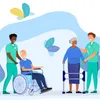Senior care in India: what’s changed in the last year?
Deval Delivala, Co-founder, GetSetUp, writes that the need for more solutions in the senior citizens age bracket became starkly visible during the pandemic.
As people live healthier for longer, the concept of ‘aging in place' and staying at home is becoming ever more common. As more people move into the 60+ age group, families and individuals alike are increasingly taking the efforts to make aging an empowering experience.
The report of the Technical Group on Population Projections for India and States, 2011–2036, estimates that India has about 138 million elderly population (60+ years), constituting 71 million women and 67 million men.
In 60 years, this age group has nearly doubled to become 10.1 percent of the total population in 2021, and it is only expected to increase in the future.
That means that solutions for those ‘aging in place’ and those who require or prefer assisted living centres need to be created for a diverse population. ‘Aging in place’ is a popular term in current aging policy, defined as “remaining living in the community, with some level of independence, rather than in residential care."
Organisations and companies need to be looking to create solutions that fit a market that is as diverse in interests, needs, and opportunities as any other age demographic.
The need for more solutions to help this age bracket became starkly visible during the pandemic. A survey** by HelpAge India taken in June 2020 showed that the livelihoods of 65 percent of older people were strained due to the pandemic. Senior care and support systems in India need to be re-evaluated to include empowering ways for seniors to age in place no matter where they choose to live out their golden years.
Eldercare is not just assisted living
While assisted living centres for older adults has become popular in India, it is not the only option. Many people are choosing to get support directly in their homes. A recent study by Alserv claims that the top five services requested by older people across each city include home healthcare (65 percent), food (20 percent), home cleaning (7 percent), plumbers (4 percent) and maid services (4 percent).
Assistance services have yet to catch up with this overwhelming need. Perhaps more important is the gaping need to build awareness around the subject of older adults living a dignified, independent life, even after retirement.
While many older adults find their niche in their golden years, many do not. Several older adults often face loneliness as family move away and life events change, leading to shift in old habits. This is particularly concerning because loneliness is one of the greatest triggers for deteriorating mental health.
With COVID-19 raging on, even assisted living centers have had to consider safety measures that limit physical contact yet maintain interpersonal relationships. In such a scenario, taking small steps to introduce this generation to digital means of communication has delivered a great deal of support as they learn how to participate in video calls to connect with loved ones and make new friends through classes or other community events.
Patience and compassion is crucial when engaging this population in learning something for the first time. Inevitably, doing so with a peer group at the helm is a prudent method that helps reduce friction, stimulates a willingness to engage, and ultimately helps them grasp the subject.
The driving force - digital tools
Digital adoption has led to improvements in older adults’ quality of life, especially during the lockdown when large urban population masses needed to make a conscious shift to digital tools, even for the most common needs.
From grocery delivery to shopping and virtual travelling, it is the internet that helped people to have an ounce of normalcy amidst unprecedented lockdowns. This period has certainly not ended. The fear of new variants has seen many still locked up in the safety of their homes, especially the older generation, who are vulnerable.
However, today, virtual communities for this generation is a norm. These virtual communities connect daily on a video platform, to discuss a variety of topics, learn, and hone new skills with the encouragement of their peer groups.
This active and thriving virtual community helps older adults cope with the challenges of aging and especially those associated with the pandemic. The platform went from 0 to over 4 million learners globally in less than 2 years. Thus, it is clear that older adults are establishing their own domain in virtual space.
Digital technology has helped provide connection, socialisation, and health and fitness classes to billions of people around the globe.
Being able to participate in this revolution has helped to diminish the sense of loneliness many older adults felt when lockdowns started and has provided a sense of purpose that have helped improve many people’s overall health.
What next?
The Index on Quality of Life for Elderly published by the Institute for Competitiveness looks at the data on the elderly in India including projections for the next 30 years. The report indicates that we need to make the most of the time we have as the generations shift.
Resources need to be in place to assist older adults in learning useful skills to rekindle a lost passion, find supplementary economic opportunities, and make friends so they can live fulfilled lives. Together, we must continue to explore new ways to reach the older adult community and help assure they have the tools and resources they need to live successfully as they age.
Edited by Anju Narayanan
(Disclaimer: The views and opinions expressed in this article are those of the author and do not necessarily reflect the views of YourStory.)







